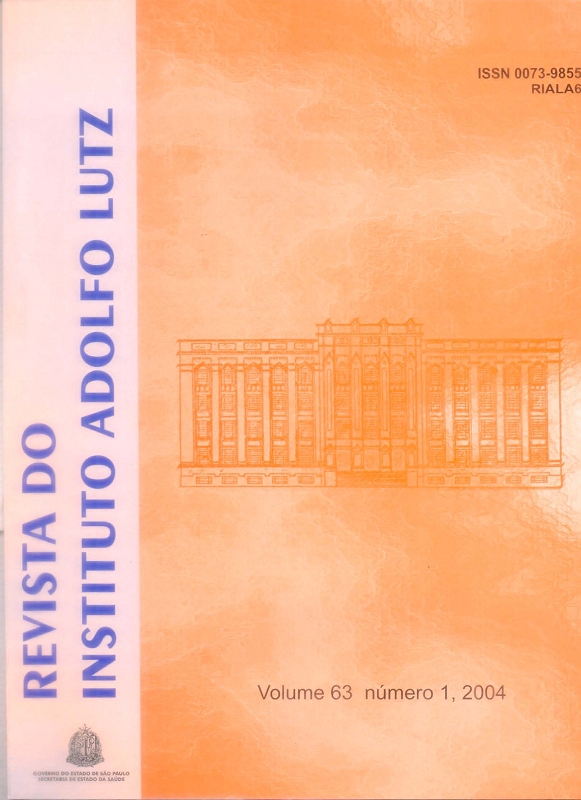Resumo
A validação tem por objetivo assegurar que o método analítico é adequado ao que se propõe quantificar e pode ser realizada por estudos interlaboratoriais ou intralaboratoriais. A exatidão é um dos principais fatores a serem estabelecidos na validação, podendo ser avaliada com o uso de materiais de referência. Os métodos espectrofotométricos são os mais utilizados na quantificação do aminoácido hidroxiprolina na rotina de análise de tecido colageno devido à precisão, simplicidade, baixo custo e rapidez. Este trabalho teve por objetivo validar intralaboratorialmente a metodologia espectrofotométrica oficial da AOAC (Association of Official Analytical Chemists) para quantificação do aminoácido hidroxiprolina utilizando amostras de conservas de carne de estudo interlaboratorial FAPAS/MAFF/UK (Food Analysis Performance Assessment Scheme / Ministry of Agriculture, Fishries and Food / United Kingdom) como material de referência. A curva de padronização apresentou linearidade (r=0,9991) na faixa utilizada. O método revelou limite de quantificação de hidroxiprolina na alíquota de análise de 0,030 μg/mL com desvio padrão relativo de 6,5% e na amostra 0,0075g/100g. As taxas de recuperação variaram de 90 a 95% determinadas em 3 níveis de concentração da amostra FAPAS fortificada. As taxas de repetitividade obtiveram CV (coeficiente de variação) inferiores a 4%. A participação em nove séries do programa...
Referências
1. Abrantes, S.M.P. Curso de validação de metodologia na área química. In: V Encontro do Instituto Adolfo Lutz, São Paulo, Instituto Adolfo Lutz, 2003.
2. AOAC International. Official Methods of Analysis of the AOAC International. 16. ed., Arlington: AOAC International, 1996. Chapter 39 (Meat and Meat Products), p. 13-9.
3. Bayley, A.J.; Light, N.D. Connective tissue in meat and meat products. England: Elsevier Science Publishers; 1989. 355p.
4. Berg, H.; Kolar, K. Evaluation of rapid moisture, fat, protein and hydroxyproline determination in beef and pork using the infratec food and feed analyzer. Fleischw., 71:787-9, 1991.
5. Della Torre, J.C.M. et al. Avaliação das metodologias de análise de produto cárneo através de programa interlaboratorial. In: 1o Congresso Brasileiro de Ciência e Tecnologia de Carnes, 2001. Anais...São Pedro: CTC-ITAL, 2001. p.466-7.
6. Della Torre, J.C.M. et al. Capítulo XIII - Carnes e produtos cárneos – 0283/IV Determinação espectrofotométrica de hidroxiprolina. In: Métodos Físico-Químicos para Análise de
Alimentos - Instituto Adolfo Lutz. 4.ed., 2004 (no prelo).
7. Etherington, D.J.; Sims, T.J. Detection and estimation of collagen. J. Sci. Food Agric., 32:539-46, 1981.
8. Fapas Secretariat. Protocol for the Food Analysis Performance Assessment Scheme (FAPAS). Organisation and Analysis of data. Ministry of Agriculture, Fisheries and Food. Food Science Laboratory, United Kingdom. 3a ed, may 1993.
9. Flint, F.O.; Firth, B.M. Histochemical demonstration of collagen in comminuted meat products. Analyst, 108:757-9, 1983.
10. Flint, F.O.; Pickering, K. Demonstration of collagen in meat products by an improved picro-sirius red polarization method. Analyst, 109:1505-6, 1984.
11. França, J.M.; Waszczynskyj, N. Teor de hidroxiprolina em peles de frango submetidas à tratamento térmico. B. CEPPA, 20:19-28, 2002.
12. Gruber, H.A. et al. Determination of connective-tissue components in beef using simultaneous equations based on amino-acid analyses. J. Food Science, 55:1506-9, 1990.
13. Hildebrandt, G.; Hirst, L. Determination of the collagen, elastin and bone content in meat products using television image analysis. J. Food Science, 50:568-72, 1985.
14. INMETRO. Orientações sobre validação de métodos de ensaios químicos. DOQ-CGCRE-008. Revisão: 01 - março 2003. 35p.
15. Johson, S.K. The determination of hydroxyproline in meat using gas chromatography-mass spectrometry. Meat Science, 22:221-7, 1988.
16. Jonas, D.A.; Wood, R. Determination of hydroxyproline in meat products: collaborative study. J. Assoc. Publ. Analysts, 21:113-21, 1983.
17. Josefowicz, M.L.; O’Neill, I.K.; Prosser, H.J. Determination of Lhydroxyproline in meat protein by quantitative Carbon-13 Fourier Transform Nuclear Magnetic Resonance Spectrometry. Anal. Chem., 49:1140-3, 1977.
18. Kolar, K. Colorimetric determination of hydroxyproline as measure of collagen content in meat and meat products: NMKL collaborative study. J. Assoc. Off. Anal. Chem., 73:54-7, 1990.
19. Leite, F. Validação em análise química. 1. ed. Campinas: Editora Átomo, 1996. 120p.
20. Murray, A.C.; Jeremiah, L.E. Toluene as an alternative to benzene in the Woessner determination of hydroxyproline. J. Agric. Food Chem., 31:1368-9, 1983.
21. Nguyen, Q.; Zarkadas, C.G. Comparison of the amino acid composition and connective tissue protein contents of selected bovine skeletal muscles. J. Agric. Food Chem., 37:1279-86, 1989.
22. Reis, R.A.A et al. Quantificação da hidroxiprolina como índice de qualidade de salsicha comercializada em Belo Horizonte – MG. Arq. Bras. Med. Vet. Zootec., 51:589-94, 1999.
23. Sims, T.J.; Bailey, A.J. Connective tissue. In: LAWRIE, R. Developments in Meat Science – 2. London: Applied Science Publishers Ltd, 1981. p.29-59.
24. Smith, S.H.; Judge, M.D. An HPLC method using FMOC-ADAM for determination of hydroxyproline in muscle. Meat Science, 30:351-7, 1991.
25. Steinhart, H.; Bosselmann, A.; Möller, C. Determination of pyridinolines in bovine collagenous tissues. J. Agric. Food Chem. 42:1943-7, 1994.
26. Swasdee, R.L. et al. Ultrastructural changes during chopping and cooking of a frankfurter batter. J. Food Science, 47:1011-3, 1982.
27. Valente Soares, L.M. Como obter resultados confiáveis em cromatografia. Rev. Inst. Adolfo Lutz, 60:79-84, 2001.
28. Zarkadas, C.G. et al. Amino acid composition and protein contents of selected very low energy reducing diets. J. Agric. Food Chem., 40:2198-207, 1992.
29. Zarkadas, C.G. et al. Assessment of the protein quality of beefstock bone isolates for use as an ingredient in meat and poultry products. Agric. Food Chem., 43:77-83, 1995.

Este trabalho está licenciado sob uma licença Creative Commons Attribution 4.0 International License.
Copyright (c) 2004 Jussara C. de M. Della Torre, Jaim Lichtig, Nelson J. Beraquet
